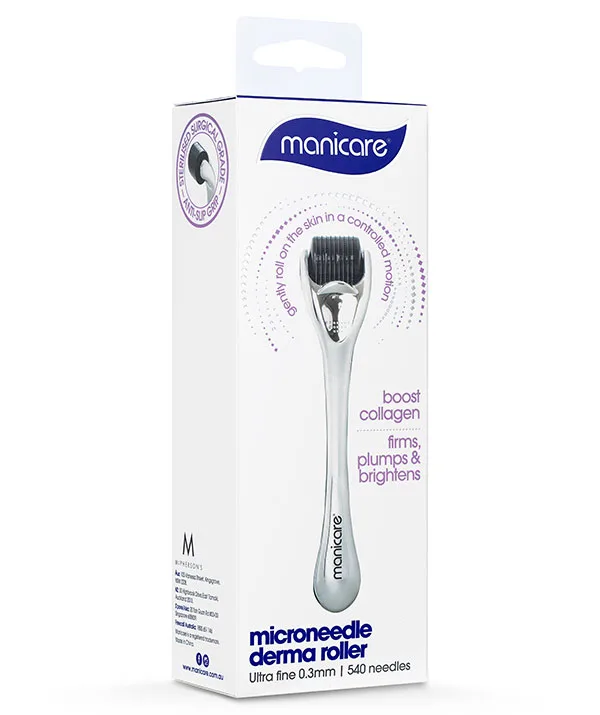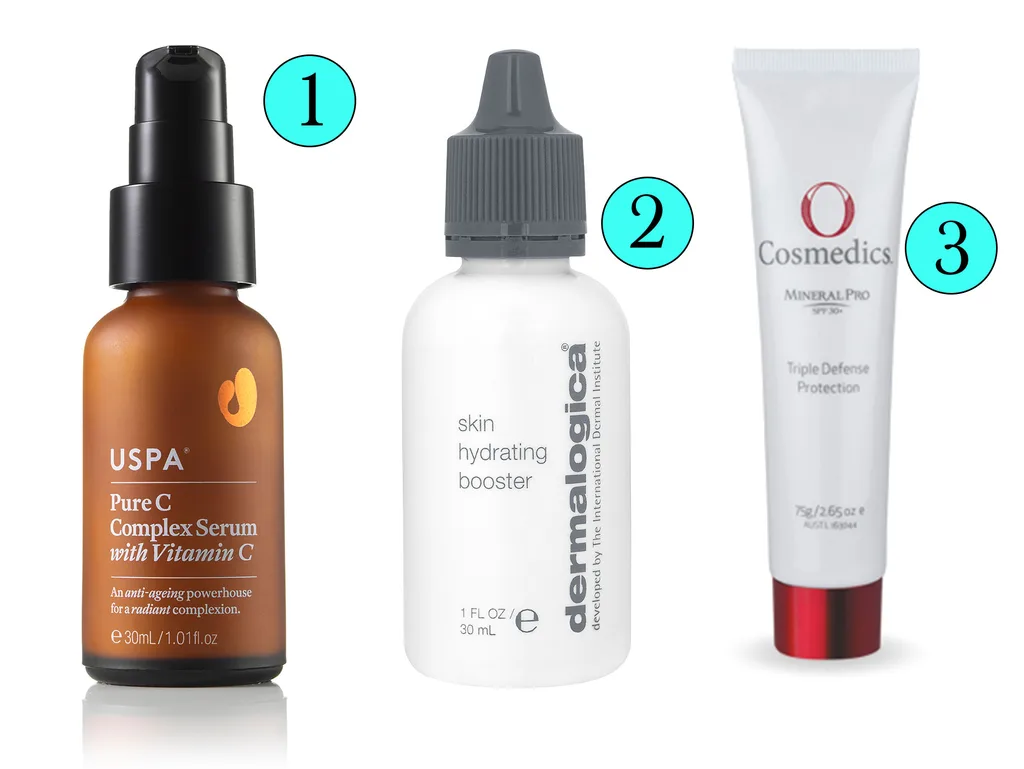Working out the right skin care routine for you can be confusing to get your head around.
You’ve bought all the products you need – from serums to oils and eye creams – now what? What order do you apply them in for maximum effectiveness, without overdoing it? Instead of just slapping them on in any which way, we spoke to four experts to get a definitive answer.
What order should I apply my skin care products?
“The skin loves and responds well to the layering of product, as you can get a higher percentage of actives working in tandem and hitting the ‘sweet spot’ within the skin where they work most effectively,” says Emma Hobson, Education Manager for the International Dermal Institute and Dermalogica.
“A rule of thumb is that you would apply the most watery consistency first, followed by the oilier, denser or heavier ones,”
This means working with your products from thinnest to thickest, lightest to heaviest.
Although there are many steps involved in an effective skin care routine, don’t be tempted to rush through them. Marie Enna-Cocciolone, skin expert and founder of O Cosmedics, advises clients to leave “one minute in-between applications [of each product] to allow absorption”. So work through your layers slowly, even if that means going off and doing something else between products (like brushing your teeth). Just remember to wash your hands before you touch your face again.
Your everyday skin care routine should look like this:
Step 1: Cleanser
This is the step where you remove your makeup and the dirt, grime, sweat and pollution from the day. Double cleansing, first with an oil to remove make up and then with a light cream or gel, is the best way to prepare your skin for active ingredients. Choose a cleanser which is right for your skin type but, because all of this is washed off your face, this is one step you can save money by going for an inexpensive product.
“Remember to remove your makeup prior to going to sleep. Let your skin regenerate and work with your skincare products,” says Lely Harvey, USPA Training and Account Manager, or else your pricey treatment products will be going to waste.
Think about it like this, you can’t cook a delicious dinner with a dirty pot and the same goes for your skin. Clean it first, and you’ll be rewarded.
Step 2: Prep your skin
The key to glowing, healthy skin is a solid at-home routine… and that’s where microneedling comes into the equation.
Even better is the fact that there’s a whole range of DIY microneedling derma rollers on the market now. So what does microneedling do? And why is it so important to incorporate it into your routine?
Microneedling is a skin treatment, not ingredient-based, which uses your body’s most natural response and reactions to repair and promote healthy skin. Microneedling creates micro-channels on the skin, which in turn triggers collagen production to compensate the skin as it rejuvenates. It also helps improves the absorption and efficiency of your skincare.
Regular usage reduces the appearance of skin imperfections, including scarring, enlarged pores and stretched marks. Simply incorporate as part of your night-time routine to help enhance the performance of actives in your favourite skincare products.
We love Manicare’s Microneedle Derma Roller. Designed for all skincare lovers to help boost collagen and enhance skincare routines. Built with 540 ultra-fine 0.3mm painless needles, the derma roller is perfect to achieve firm, plump and radiant skin.
You can do this two to three times a week after you’ve cleansed your face at night and before putting on your serums.

Manicare’s Microneedle Derma Roller 1pk, $39.99.
Step 3: Toner/essence
This is a step which some people might find excessive – after all, what benefit does a toner have?
But actually a toner is a great way to further prep your skin for serum, and give your skin a boost of hydration in a lightweight formula. Mist on this layer for a quick pick-me-up.
Step 4: Serums
Serums are usually the most active and potent product you will use (meaning it contains ingredients that will often make the most difference) so you want to ensure they can sink right into the skin without any problems.
“Serum is the thinnest product in your routine so it will penetrate deep and will work as a conductor for the products you will use after,” says Magen Darel from skin care brand Verdem.
“Not following the manufacturer’s instructions when using the product – such as applying either too much or too little of the product,” is the biggest mistake women make when it comes to skin care, says Hobson. So although you might want to make your expensive serum last longer by only using a small amount, or saving it for special occasions, you will get the best results by regularly using the correct amount.
Day
“In the morning we should focus more on protecting our skin from all the contaminants that we exposed to, like pollution, dirt and UV rays,” says Darel. For this reason choose a product that contains antioxidant ingredients such as “a naturally stable Vitamin C” says Harvey. Vitamin C will improve “pigmentation, lines, capillaries and sensitivity” and leave the skin feeling smoother.
You also want to make sure your skin stays hydrated throughout the day, as sitting in an air-conditioned room can sap moisture from the skin. Because of this, Hobson also recommends applying Hyaluronic Acid to your face: “An awesome ingredient that boosts the hydration levels of the skin making it feel plump, soft and smooth.”
You can apply both of these serums as part of your day routine, starting with vitamin C first as this is the more active product.
Night
Retinol, AHAs, glycolic and lactic acids are all ingredients that are better used at night, as they can potentially cause sun sensitivity during the day. All these ingredients come in different strengths, so it’s important to work out what percentage your skin can tolerate, and work up from there over time.
“Night-time products can often be quite active to work with the skin’s regenerative process,” says Hobson.
Retinol is the real hero here. It acts like a leader “to regulate cellular activity,” says Enna-Cocciolone, and is responsible for reducing pigmentation, sun spots, fine lines and can even stimulate collagen in deeper layers of the skin.

1. Dermalogica Age Smart Overnight Retinol Repair 1% & Buffer Cream, $148
2. Uspa Smoothing AHA Serum with Fruit Acids, $90
3. O Cosmedics Potent Retinol Serum 0.5%, $92
Step 5: Oil
At night, you may want to include a plant-based oil (such as rose hip, jojoba or argan) into your routine for a boost of moisture to combat dry skin.
If you notice that your night-time moisturiser sinks in too quickly, or you haven’t found a rich night cream that you like to use, adding oil is an easy way to make your day cream work for night. Just make sure it doesn’t contain any SPF.
Step 6: Eye cream
This is a vital part of an anti-ageing skin care regime, and is specifically tailored to the delicate skin around your eyes. Aim for an amount the size of a grain of rice and gently pat it in, avoiding the lash line.
In the day, opt for a lightweight cream that won’t disturb your makeup, and that also includes SPF. Your eyelids are an often missed area when applying sunscreen, but you can still get freckles, pigmentation and even melanoma in such a small space.
At night, user a richer cream, but less of it so that you don’t wake up with puffy eyes.
Step 7: Moisturiser
This is the layer that locks everything in place, and can actually help your serums work more effectively
Morning:
“During the day most people want to have a lighter base as they are also wearing makeup,” says Enna-Cocciolone, so skip the heavy oils and creams which could breakdown your make up and cause it to transfer off your face.
A light cream won’t feel heavy under sunscreen and makeup, and you can layer it for extra moisture.
Night:
The time to bring out your heavy hitters in the moisture department is right before your go to sleep – as this is when your skin does its repair work. Choose rich, luxurious creams that will create a film on your face, locking in moisture. Retinol might be even more effective with moisturiser, as it acts as a buffer to reduce irritation so you can use the product more consistently.
Step 8: Sunscreen (during the day)
Physical sunscreen (those which use natural ingredients such as zinc to physically block UVA/UVB rays reaching your skin) should be your last step in the morning, and is the ultimate product to slow ageing, wrinkles and pigmentation from appearing. UVA/UVB rays can penetrate your skin’s layers, break down collagen, produce melanin which leads to sun spots and may lead to cancerous cells.
“It sits on top of your skin so if it goes on first, it prevents other ingredients from penetrating,” says Jeannette Graf, a New York dermatologist.
Everybody should be using sunscreen everyday, rain hail or shine. Clouds do not block UVA rays.

1. Uspa Pure C Complex Serum with Vitamin C, $105
2. Dermalogica Skin Hydrating Booster, $87
3. O Cosmedics Mineral Pro SPF 30+, $47



